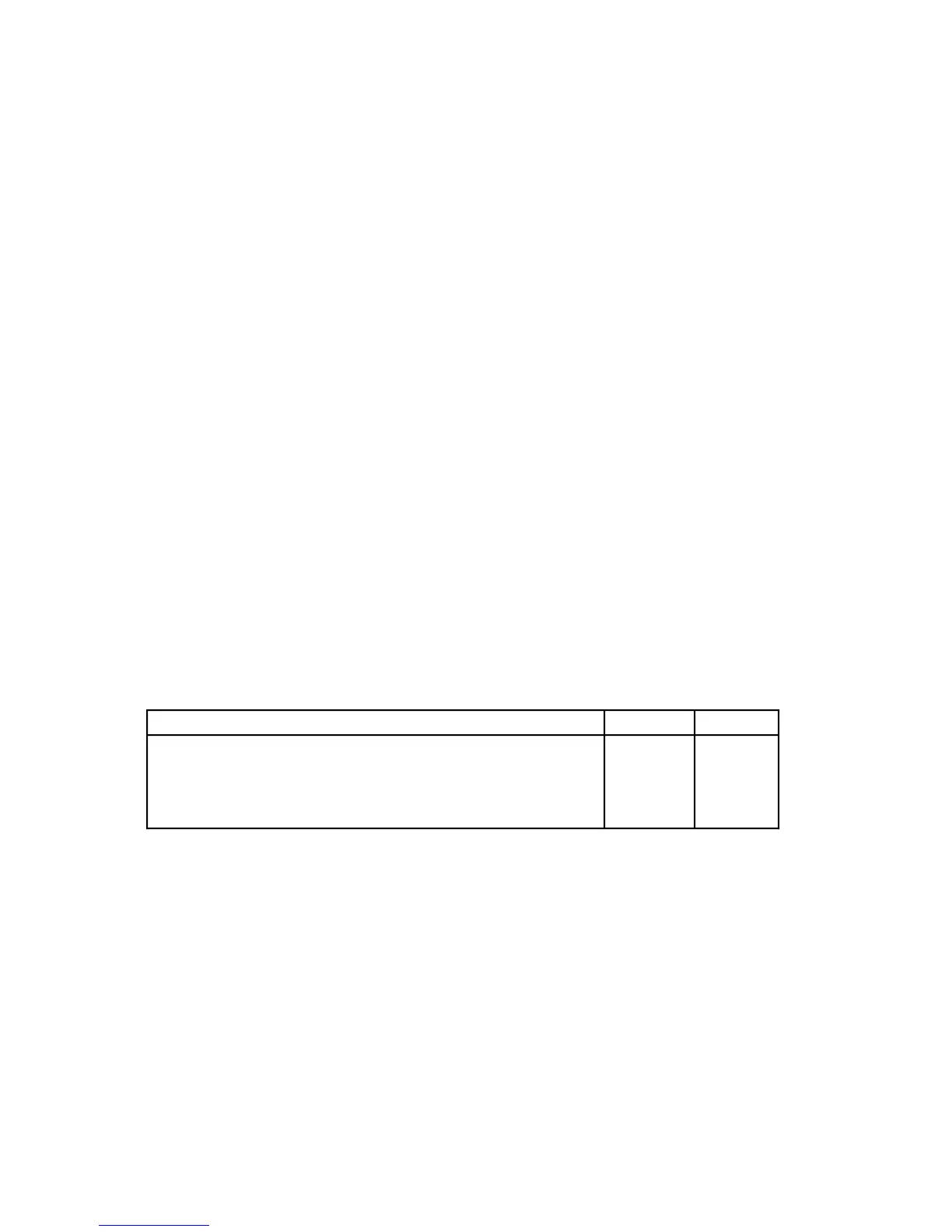10-2 M68020 USER’S MANUAL MOTOROLA
Solving Equations (10-1) and (10-2) for K gives:
K = P
D
• (T
A
+ 273°C) + θ
JA
•P
D
2
(10-3)
where K is a constant pertaining to the particular part. K can be determined from equation
(10-3) by measuring P
D
(at thermal equilibrium) for a known T
A
. Using this value of K, the
values of P
D
and T
J
can be obtained by solving equations (10-1) and (10-2) iteratively for
any value of T
A
.
The total thermal resistance of a package (
θ
JA
) can be separated into two components,
θ
JC
and θ
CA
. θ
JC
represents the barrier to heat flow from the semiconductor junction to
the package (case) surface, and θ
CA
represents the barrier to heat flow from the case to
the ambient air. These terms are related by the equation:
θ
JA
=θ
JC
+
θ
CA
(10-4)
θ
JC
is device related and cannot be influenced by the user. However, θ
CA
is user
dependent and can be minimized by such thermal management techniques as heat sinks,
forced air cooling, and use of thermal convection to increase air flow over the device.
Thus, good thermal design on the part of the user can significantly reduce θ
CA
so that θ
JA
approximately equals θ
JC
. Substitution of θ
JC
for θ
JA
in equation (10-1) results in a lower
semiconductor junction temperature.
10.2.1 MC68020 Thermal Characteristics and
DC Electrical Characteristics
MC68020 Thermal Resistance (°C/W)
The following table provides thermal resistance characteristics for junction to ambient and
junction to case for the MC68020 packages with natural convection and no heatsink.
Characteristic—Natural Convection and No Heatsink θ
JA
θ
JC
Thermal Resistance
PGA Package (RC Suffix)
PPGA Package (RP Suffix)
CQFP Package (FE Suffix)
PQFP Package (FC Suffix)
26
32
46
42
3
10
15
20
Resistance is to bottom center (pin side) of case for PGA and PPGA packages, top center of case
for CQFP and PQFP packages.
MC68020 CQFP Package
Table 10-1 provides typical and worst case thermal characteristics for the MC68020
CQFP package both with and without a heatsink. The heatsink used is black anodized
aluminum alloy, 0.72"x0.75"x0.6" high with an omnidirectional 5x6 array of fins.
Attachment was made using Epolite 6400 one part epoxy.

